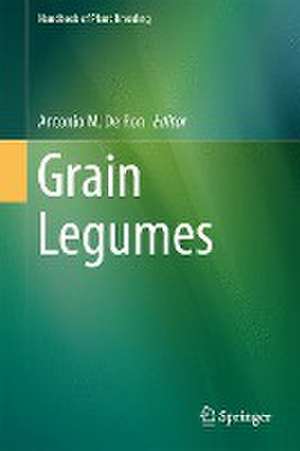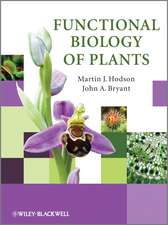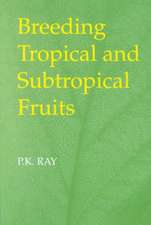Grain Legumes: Handbook of Plant Breeding, cartea 10
Editat de Antonio M. De Ronen Limba Engleză Hardback – 29 aug 2015
| Toate formatele și edițiile | Preț | Express |
|---|---|---|
| Paperback (1) | 1364.45 lei 6-8 săpt. | |
| Springer – 22 oct 2016 | 1364.45 lei 6-8 săpt. | |
| Hardback (1) | 1370.47 lei 6-8 săpt. | |
| Springer – 29 aug 2015 | 1370.47 lei 6-8 săpt. |
Preț: 1370.47 lei
Preț vechi: 1671.31 lei
-18% Nou
Puncte Express: 2056
Preț estimativ în valută:
262.36€ • 272.71$ • 217.53£
262.36€ • 272.71$ • 217.53£
Carte tipărită la comandă
Livrare economică 07-21 februarie 25
Preluare comenzi: 021 569.72.76
Specificații
ISBN-13: 9781493927968
ISBN-10: 1493927965
Pagini: 716
Ilustrații: XIX, 438 p. 38 illus., 27 illus. in color.
Dimensiuni: 155 x 235 x 30 mm
Greutate: 0.82 kg
Ediția:1st ed. 2015
Editura: Springer
Colecția Springer
Seria Handbook of Plant Breeding
Locul publicării:New York, NY, United States
ISBN-10: 1493927965
Pagini: 716
Ilustrații: XIX, 438 p. 38 illus., 27 illus. in color.
Dimensiuni: 155 x 235 x 30 mm
Greutate: 0.82 kg
Ediția:1st ed. 2015
Editura: Springer
Colecția Springer
Seria Handbook of Plant Breeding
Locul publicării:New York, NY, United States
Public țintă
ResearchCuprins
Common Bean.- Pea.- Chickpea.- Lentil.- Faba Bean.- Lupins.- Cowpea.- Grass Pea.- The Legume-Rhizobia Symbiosis.- Nutritional Value.- Seed Physiology and Germination of Grain Legumes.- Reproductive Biology of Grain Legumes.- Grain Legume Cropping Systems in Temperate Climates.
Notă biografică
Antonio M. De Ron is Research Professor at the Misión Biológica de Galicia (MBG), Spanish National Research Council (CSIC) in Pontevedra, Spain. He received both his graduate and doctorate in Biology from the University of Santiago de Compostela (USC, Spain). Initially he worked as a postgraduate student in plant protection at the National Institute for Agricultural Research (INIA, Spain). In 1988, Prof De Ron gained a staff position as scientist at the MBG working on legume genetics, germplasm and breeding and he is currently the leader of the Biology of Agrosystems Research Group. He was also part-time lecturer of genetics and breeding at the USC. Currently he is also serving as Leader of the Protein Crops Working Group of the European Association for Research on Plant Breeding (EUCARPIA, The Netherlands). He has published many scientific articles, books and monographs, as well as several educational publications. Prof De Ron has won awards for his work and is well recognized in the international scientific community for his achievements.
Textul de pe ultima copertă
This work covers legume crop origins and evolution, genetic resources, breeding achievements, specific goals and techniques, including the potential and actual integration of new technologies. The vast amount of knowledge collected in this volume should not only serve researchers, but breeders and academics as well. The text provides plant breeders with new scientific information, and familiarizes molecular biologists with the peculiarities of breeding of the main grain legume species.
The first part of the text consists of crop-specific chapters devoted to the most produced and consumed worldwide grain legume crops. The second part includes five cross chapters covering topics that relate to these crops. These chapters have been written by the world's leading breeders and scientists, representing a wide experience in their crops and topics.
The first part of the text consists of crop-specific chapters devoted to the most produced and consumed worldwide grain legume crops. The second part includes five cross chapters covering topics that relate to these crops. These chapters have been written by the world's leading breeders and scientists, representing a wide experience in their crops and topics.
Caracteristici
Contains all the basic and updated information on the state of the art of breeding grain legumes Provides crop-specific chapters devoted to the most produced and consumed worldwide grain legume crops Covers legume crop origins and evolution, genetic resources, breeding achievements, specific goals and techniques, including the potential and actual integration of new technologies Includes supplementary material: sn.pub/extras

















